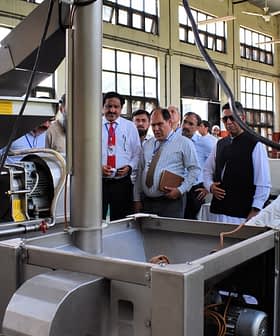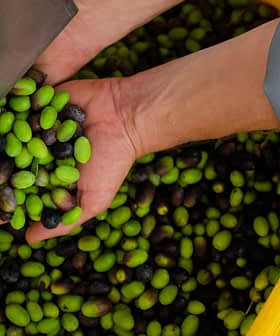India Increases Duties on Olive Oil Again
The Indian government continues its trend of raising import duty rates on olive oil.
On February 1, Indian finance minister Arun Jaitley announced that duties for extra virgin and virgin olive oil were increasing from 12.5 percent to a whopping 30 percent, while those for refined olive oil (olive oil and olive pomace oil) would jump from 20 to 35 percent.
These duties are excessive looking at the fact that India doesn’t produce any commercial level olive crop.
Olive oil was included on a long list of edible vegetable oils subject to the increase which also included groundnut (peanut), cottonseed, safflower seed, saffola, coconut, palm kernel, linseed, corn, castor and sesame oils.
While some praised the government’s move as a way to safeguard the interests of domestic producers, the Indian Olive Association (IOA) called the increase “exorbitant and extraordinary”. “There is no domestic production of olive oil in India; hence there are no domestic farmers who are affected by olive oil imports or who need protection,” the association stated in a press release dated February 1.
The IOA press release also points out other reasons the move is illogical when it comes to the olive oil industry. While prices of other types of edible oil have declined in India in recent years, the cost of olive oil from supplier countries like Spain and Italy has increased in the past two years because of a fall in production. Also, the appreciation of the Euro against the Rupee has resulted in an even higher cost for Indian importers.
Indian import duties imposed on olive oil have been steadily increasing since 2014 when the government launched its “Made in India” program with the aim to encourage domestically manufactured goods. Duties on olive oil increased from 0 percent for crude oil and 7.5 percent for refined oil in 2013, to 7.5 and 15 percent respectively in 2015, before further rising to 12.5 and 20 percent in 2017.
The newly introduced rates for 2018 of 30 and 35 percent are also subject to an additional 10 percent “import cess.” Rahul Upadhyay, vice-president of the IOA, told Olive Oil Times that these duties are excessive. “Today the duties including the new 10 percent import cess introduced in February 2018 are 33 percent on crude variants like extra virgin and virgin, and almost 39 percent on refined variants like olive oil and olive pomace oil,” he concluded. “These duties are excessive looking at the fact that India doesn’t produce any commercial level olive crop. However, the Indian government is not differentiating olive oil from other oils. India imports 65 percent of its edible oil requirement where the major share is that of palm, sunflower and soybean oils.”
The increased cost of olive oil from source countries, the strong Euro, and record import duty rates mean Indian consumers can expect higher prices at the supermarket. “For olive oil it’s a triple whammy that has increased the retail prices substantially,” added Upadhyay. “Prices on retail shelves are almost 50 to 60 percent higher than last year and will go up further due to this recent custom duty increase.”
The IOA has asked the Indian government to reduce the import duties on olive oil, citing the fact that there are no domestic olive producers to protect while also pointing out the potential health benefits of olive oil in a country that ranks first in the world for cardiac disease and diabetes.
“The government’s effort should be to make the product increasingly accessible to the Indian consumer given its overarching and universally accepted health benefits. Instead, it’s misconceived and misguided actions are resulting in exactly the opposite,” concluded the association’s February 1st press release.
Despite the ever-increasing cost of olive oil in recent years, sales in India have surprisingly not fallen and actually remained stable, confirmed Upadhyay. “It is evident that there seems to be a short-term impact in import volumes, but that may be due to high prices at origin last year,” he said. “Retail volumes, however, are stable it seems. The bigger reason for the growth of the market over the last few years was a 5‑year marketing campaign by EU and ASOLIVA to promote olive oil in India. This campaign ended over a year ago. Since then the market has not grown much and the prices haven’t helped either.”
Despite this slowing down of the consumer olive oil market and continually climbing prices, Upadhyay remains optimistic and sees the potential for further growth. “The Indian economy and consumer story continue to be strong. Major regulatory changes such as the GST (Goods and Services Tax) are also done with, so the future looks great for FMCG (fast-moving consumer goods) growth. With that, the stage is also set for growth in the olive oil story in India.”
“With some price correction at the origin and another marketing effort by EU and ASOLIVA, we feel the Indian olive oil market will continue to grow at over 30 percent a year in volume terms,” Upadhyay said.








